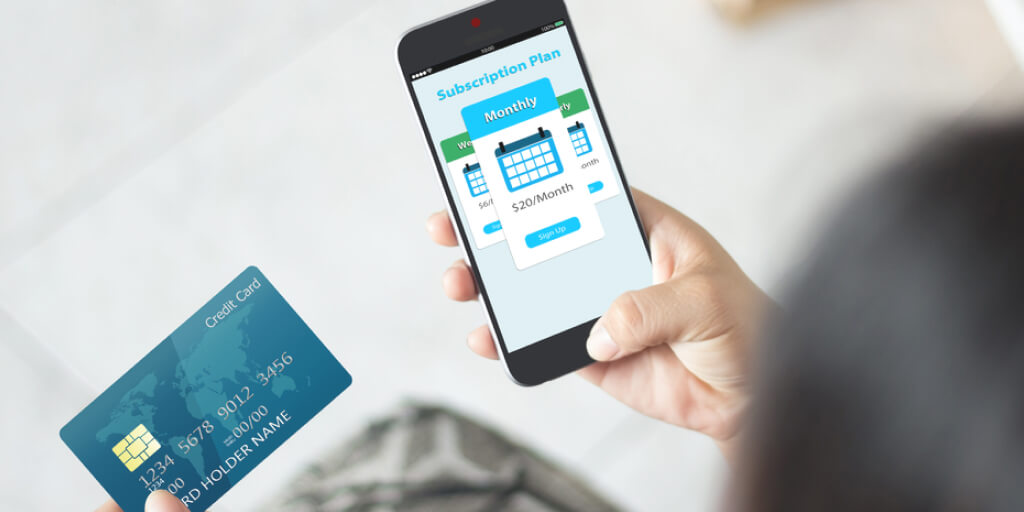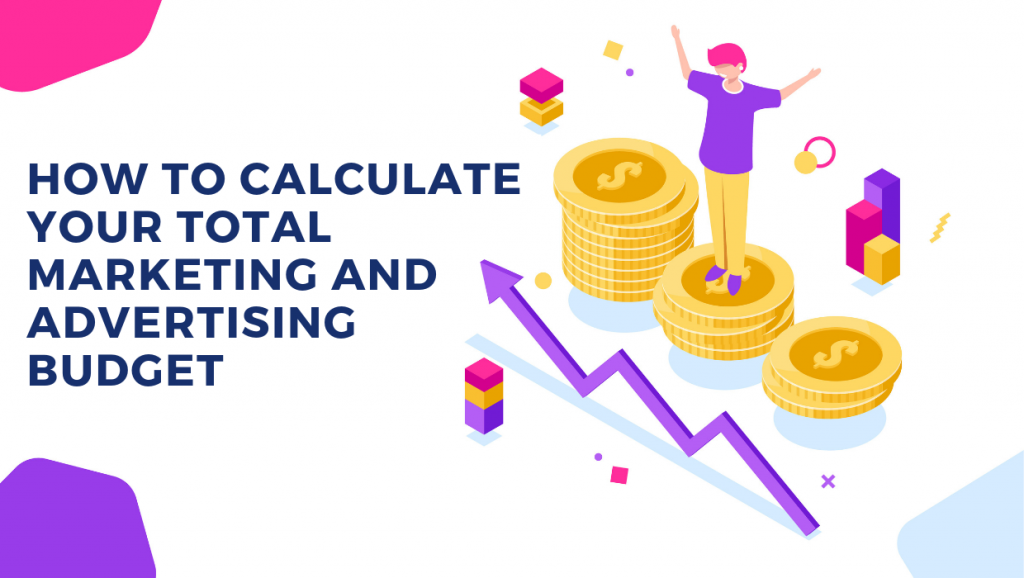Understanding the Importance of App Monetization and In-App Advertising, Exploring Different Strategies and Revenue Models
In today’s digital age, mobile applications have become an integral part of our lives. From entertainment and productivity to health and finance, there seems to be an app for everything. However, building and maintaining these apps requires a considerable investment of time, effort, and resources. To sustain their operations and generate revenue, app developers employ various monetization strategies and revenue models.
In-App Advertising
One of the most common app monetization strategies is in-app advertising. Developers integrate ad networks or ad platforms into their applications, allowing them to display advertisements to users. These ads can take different forms, such as banner ads, interstitial ads, or video ads. App developers earn revenue either through impressions (the number of times an ad is viewed) also known as cost per impression (CPM) or clicks on the ads also known as cost per click (CPC).
In-App Purchases
Another popular revenue model is in-app purchases. Apps offer users additional features, content, or virtual goods that can be purchased within the app. These purchases may include upgrades, premium content, virtual currency, or subscription-based services. By enticing users with exclusive or enhanced functionalities, developers can generate revenue from those willing to make in-app purchases.
Freemium Model
The freemium model combines both free and premium elements within an app. The app is initially free to download and use, but it offers additional features or content that can be unlocked through in-app purchases or subscriptions. This approach allows developers to attract a larger user base by offering a basic version for free while offering premium options for users who are willing to pay.
Subscriptions
The subscription model involves charging users a recurring fee for accessing content, services, or premium features within the app. Subscriptions can be offered on a monthly, quarterly, or annual basis, providing a consistent revenue stream for developers. This model is commonly used in apps that provide streaming services, news articles, educational content, or software tools.
Sponsorships and partnerships
Some apps seek revenue through sponsorships and partnerships. This involves collaborating with other businesses or brands to promote their products or services within the app. Developers can display sponsored content, run promotional campaigns, or integrate affiliate marketing programs, earning revenue based on the engagement or conversions generated.
Data Monetization
In certain cases, app developers collect user data (with consent and privacy measures in place) and leverage it for monetization purposes. They may anonymize and aggregate the data to provide third-party companies insights and market research reports to third-party companies. Alternatively, they might use the data to offer personalized advertising or targeted recommendations, attracting advertisers and generating revenue.
Licensing and white labeling
Some app developers monetize their apps by licensing or white labeling their technology to other businesses. This approach involves selling the rights to use the app’s underlying technology, framework, or infrastructure to other companies or developers, who can then customize and deploy it as their own branded app. Licensing and white labeling can provide a source of revenue without directly relying on user interactions or in-app purchases.
Crowdfunding and donations
In certain cases, app developers turn to crowdfunding platforms or accept donations from users to support their app development and ongoing operations. This approach relies on the goodwill and financial contributions of users who appreciate the app’s value and are willing to contribute voluntarily.
By exploring these different strategies and revenue models, app developers can find the most suitable approach for their target audience, industry, and app functionality. It is essential to strike a balance between user experience and monetization to ensure long-term sustainability and success in the competitive app market.
Display Ads: Maximizing Revenue through Banner Ads, Interstitial Ads, and Native Ads

Display advertising is a widely used monetization strategy in the mobile app industry. By integrating various types of display ads, app developers can generate revenue through impressions and clicks, also known as ‘cost per click (CPC)’. Let’s explore the different types of display ads and how they can maximize revenue.
Banner Ads
Banner ads are one of the most common forms of display advertising in mobile apps. These ads typically appear as rectangular or square graphics at the top, bottom, or sides of the app interface. Banner ads are relatively non-intrusive and allow users to interact with the app while still being exposed to the advertisement. App developers earn revenue based on the number of impressions or clicks the banner ads receive.
Interstitial Ads
Interstitial ads are full-screen advertisements that appear at natural transition points within the app, such as between levels in a game or during a content browsing session. Interstitial ads often include rich media content like images, videos, or interactive elements to capture users’ attention. Due to their larger size and immersive nature, interstitial ads tend to have higher engagement rates and can generate significant revenue. Developers are typically paid per impression or click.
Native Ads
Native ads are designed to blend seamlessly with the app’s user interface, mimicking the app’s content and visual style. These ads are integrated organically within the app’s layout and are often labeled “sponsored” or “recommended” to maintain transparency. Native ads provide a less disruptive user experience, resulting in higher engagement and click-through rates. Developers earn revenue based on impressions or clicks, similar to other display ad formats.
By implementing a combination of banner ads, interstitial ads, and native ads, app developers can maximize their revenue potential. However, it’s important to strike a balance between displaying ads and maintaining a positive user experience. Too many ads or intrusive placements can negatively impact user satisfaction and retention.
To optimize display ad revenue, developers can consider the following strategies:

Ad Placement
Experiment with different ad placements and sizes to find the most effective positions within the app’s interface. Test different options to determine which placements generate the highest click-through rates and revenue without compromising the user experience.
Ad Targeting
Utilize targeting options provided by ad networks or platforms to deliver ads relevant to the app’s target audience. By displaying ads that align with users’ interests and preferences, developers can increase the likelihood of engagement and clicks.
Ad Mediation
Implement ad mediation platforms that allow app developers to work with multiple ad networks simultaneously. Ad mediation helps optimize ad delivery by selecting the best-performing ads from various networks, maximizing revenue potential.
Ad Frequency
Strike a balance between displaying ads to generate revenue and ensuring users do not feel overwhelmed or annoyed by frequent ad interruptions. Consider implementing frequency capping to limit the number of ads shown to each user within a specific time frame.
Ad A/B Testing
Conduct A/B testing with different ad creatives, formats, and placements to identify the most effective combinations. By analyzing user engagement and revenue metrics, developers can optimize their ad strategies and improve overall performance.
By leveraging the potential of display ads, app developers can generate a steady stream of revenue while providing users with a free or lower-cost app experience. It is crucial to find the right balance between ads and user experience to maintain a loyal user base and drive long-term success in the competitive app market.
Banner Ads: Leveraging Eye-Catching Ad Formats for Higher Click-Through Rates

Banner ads are a popular form of display advertising in mobile apps. They provide app developers with an opportunity to monetize their apps by incorporating visually appealing advertisements. To maximize click-through rates and revenue, it is essential to leverage eye-catching ad formats. Here are some strategies to consider:
Static Image Banners
These are the most basic and commonly used format for banner ads. These ads typically consist of a static image or graphic accompanied by a brief text description. To make static image banners more eye-catching, developers should focus on creating visually appealing designs with vibrant colors, clear imagery, and concise but compelling text. A well-designed static image can grab users’ attention and entice them to click on the ad.
Animated Banners
Animated banners add motion and interactivity to the ad, making it more engaging and attention-grabbing. Developers can create visually appealing ads that capture users’ interest by incorporating subtle animations or transitions within the banner. However, it’s important to strike a balance between animation and not being overly intrusive or distracting to the app experience.
Rich Media Banners
Rich media banners take banner ads to the next level by incorporating interactive elements such as videos, slideshows, carousels, or playable content. These dynamic formats allow users to interact with the ad directly, providing a more immersive experience. By showcasing product demonstrations, interactive games, or captivating storytelling, rich media banners can significantly increase user engagement and click-through rates.
Personalized Banners
Personalized banners leverage user data and preferences to deliver targeted ads that are more relevant and appealing to individual users. By analyzing user behavior, demographics, or interests, developers can tailor the content of the banner ad to match the specific preferences of each user. This customization enhances the user experience and increases the likelihood of click-throughs.
Native Banners
Native banners blend seamlessly with the app’s overall design and user interface, making them appear more natural and less intrusive. These ads maintain the look and feel of the app’s content while still being identified as sponsored or promoted. By integrating native banners that align with the app’s aesthetics and user experience, developers can increase the chances of users engaging with the ads.
Location-Based Banners
Leveraging location data, developers can display banner ads that are relevant to users’ physical surroundings. For example, a food delivery app could show ads for nearby restaurants or promotions in the user’s vicinity. By delivering location-specific ads, developers can capture users’ attention with relevant offers, leading to higher click-through rates.
Call-to-Action (CTA) Optimization
Including a clear and compelling call-to-action within the banner ad is crucial to driving click-through rates. The CTA should provide a specific and enticing action for users to take, such as “Shop Now,” “Learn More,” or “Get a Free Trial.” By using compelling CTAs and placing them prominently within the banner, developers can increase the chances of users clicking on the ad.
By implementing these strategies and leveraging eye-catching ad formats, app developers can enhance the effectiveness of their banner ads, increase click-through rates, and maximize revenue. It’s important to continuously monitor and optimize ad performance by analyzing user engagement and experimenting with different designs and formats to find the most effective combination for your target audience.
Interstitial Ads: Captivating Users with Full-Screen Ad Experiences

Interstitial ads are full-screen advertisements that appear at natural transition points within a mobile app. These ads provide app developers with an opportunity to captivate users with immersive and engaging ad experiences. To make the most of interstitial ads and maximize their impact, consider the following strategies:
Compelling Visuals
Interstitial ads should feature visually appealing and high-quality graphics that instantly grab users’ attention. Incorporate eye-catching images, vibrant colors, and compelling designs to make the ad visually enticing. The ad should be visually consistent with the app’s overall aesthetic while still standing out enough to capture users’ interest.
Rich Media Content
Enhance the interstitial ad experience by incorporating rich media elements such as videos, animations, or interactive features. Videos can be particularly effective in conveying a message or showcasing a product or service. These dynamic elements create a more engaging and memorable ad experience, increasing the chances of user interaction and click-throughs.
Contextual Relevance
Ensure that the content of the interstitial ad is contextually relevant to the user and the app’s overall theme or purpose. By aligning the ad with the app’s content or the user’s behavior, demographics, or preferences, developers can increase the ad’s appeal and the likelihood of user engagement.
Clear Call-to-Action (CTA)
Includes a clear and prominent call-to-action within the interstitial ad that directs users to take a specific action. The CTA should be concise, compelling, and easily recognizable. Common CTAs include “Download Now,” “Sign Up,” or “Learn More.” The CTA should provide a clear next step for users to follow, encouraging them to click on the ad and continue their journey.
Frequency and timing
Find the right balance when it comes to the frequency and timing of interstitial ads. Displaying ads too frequently or at inappropriate moments can lead to user frustration. Consider placing interstitial ads at natural transition points, such as between levels in a game, during app launches, or on content loading screens. This ensures that the ad appears in a way that doesn’t disrupt the user experience but rather complements it.
Ad Duration
Optimize the duration of the interstitial ad to strike a balance between providing enough time for users to engage with the content and not overstaying its welcome. If the ad is too short, users may need more time to process the message, while an ad that is too long may result in user impatience or abandonment. Test different durations to find the optimal length that maximizes user engagement.
A/B testing and optimization
Continuously conduct A/B testing to experiment with different creative variations, ad formats, placements, and targeting options. Measure the performance of each variant in terms of click-through rates, conversions, and user feedback. This iterative process allows developers to optimize the interstitial ad strategy and identify the most effective combination for their specific app and target audience.
By implementing these strategies and delivering captivating full-screen ad experiences, app developers can leverage interstitial ads to effectively engage users and generate revenue. However, it is crucial to strike a balance between monetization and user experience to ensure that users find the ads valuable and the overall app experience remains enjoyable.
Native Ads: Seamlessly Integrating Ads into Your App’s User Interface

Native ads provide app developers with a powerful monetization strategy by seamlessly integrating advertisements into the app’s user interface. These ads mimic the style, format, and overall design of the app’s content, resulting in a more organic and non-disruptive ad experience for users. Here are some key considerations for effectively implementing native ads:
Consistent Design
Native ads should closely match the visual and interactive design elements of the app’s user interface. This includes using the same fonts, colors, and layout styles to ensure that the ads blend seamlessly with the surrounding content. The goal is to make the ad appear as if it is a natural part of the app’s interface, enhancing user engagement and reducing the perception of intrusive advertising.
Relevant and Engaging Content
Deliver native ads that are relevant and valuable to the app’s users. The content of the ads should align with the app’s core theme or the user’s interests and preferences. By providing meaningful and engaging content, native ads can generate higher user engagement and click-through rates. Consider using personalized recommendations or targeting options to deliver more relevant ads to individual users.
Clear Disclosure
It is crucial to maintain transparency and disclose that an ad is being presented to the user. Native ads should be labeled as “sponsored,” “promoted,” or with similar language to ensure users are aware that they are viewing an advertisement. Transparency builds trust with users and helps maintain a positive user experience.
Non-Intrusive Placement
Place native ads within the app’s natural content flow, where they are less likely to disrupt the user’s experience. Carefully consider the placement and timing of native ads to avoid interrupting critical user interactions or impeding the app’s functionality. Strive for a balance between generating revenue and preserving a seamless user experience.
Adaptive Formatting
Adapt the format of the native ads to suit different devices and screen sizes. Native ads should be responsive and capable of adjusting to various screen orientations and resolutions. This ensures that the ads maintain their visual appeal and usability across a wide range of devices, enhancing the user experience and maximizing ad effectiveness and app monetization.
User feedback and iteration
Collect and analyze user feedback regarding native ads to continuously improve their performance. Solicit user opinions through surveys or in-app feedback mechanisms to understand their preferences and perceptions of the ads. This feedback can help optimize the design, content, and placement of native ads to better align with user expectations and preferences.
Ad Network Integration
Partner with reliable ad networks that specialize in native ads to access a wide range of advertisers and optimize ad delivery. Ad networks offer advanced targeting capabilities, ad personalization options, and optimization tools that can enhance the performance of native ads in terms of engagement and revenue generation.
By seamlessly integrating native in-app advertising into the app’s user interface, developers can monetize their apps effectively while maintaining a positive user experience. Striking the right balance between ad visibility, relevance, and integration is crucial for maximizing revenue and fostering long-term user engagement. Regular monitoring, testing, and optimization of native ads are essential to ensuring they continue to deliver value to both users and developers.
In-app Purchases: Unlocking Additional Revenue Streams and Enhancing the User Experience

In-app purchases provide app developers with an effective monetization strategy by offering users the ability to make purchases within the app. These purchases can unlock additional features, content, or virtual goods, enhancing the user experience while generating revenue. Here are key considerations for implementing in-app purchases successfully:
Define value-added features.
Identify features, content, or virtual goods that users would find valuable and are willing to pay for. These can include premium content, advanced functionalities, exclusive levels, virtual currency, customization options, or additional services. The added value should enhance the app experience and provide clear benefits to users, motivating them to make a purchase.
Offer different purchase options.
Provide users with a variety of in-app purchase options to cater to their preferences and budget. This can include one-time purchases, subscriptions, consumable items, or bundles. Offering different price points and purchase choices allows users to select the option that best suits their needs and increases the chances of conversion.
Seamless purchase process
Ensure that the in-app purchase process is user-friendly, seamless, and secure. Minimize the number of steps required for the purchase, provide clear instructions, and support multiple payment methods. Streamlining the purchase process reduces friction and encourages users to complete their transactions.
Timely and relevant promotions
Implement promotional campaigns to incentivize users to make in-app purchases. Offer time-limited discounts, exclusive offers, or special deals to create a sense of urgency and encourage users to take advantage of the opportunity. Personalize promotions based on user behavior, preferences, or milestones within the app to make them more relevant and compelling.
Reward Loyalty
Implement loyalty programs or reward systems to encourage users to make repeat purchases. Offer incentives such as discounts, exclusive content, or virtual currency bonuses to users who make frequent or high-value purchases. Recognizing and rewarding user loyalty helps build a strong user base and fosters a positive relationship with users.
Transparent pricing and descriptions
Clearly communicate the pricing, benefits, and terms of the in-app purchases to users. Provide accurate and concise descriptions of what users will receive when making a purchase. Avoid misleading or deceptive practices that can erode trust and negatively impact the user experience. Transparent and honest communication builds user confidence and increases the likelihood of purchase conversions.
Continuous Updates and Content Refresh
Regularly update the app with new content, features, or experiences to keep users engaged and encourage additional in-app purchases. Introduce fresh content, levels, or events to provide ongoing value and motivate users to explore and invest in the app. Regular updates demonstrate your commitment to delivering a great user experience and encourage users to continue supporting the app through in-app purchases.
By implementing these strategies, app developers can unlock additional revenue streams while enhancing the user experience through in-app purchases. It is important to strike a balance between offering valuable content and respecting users’ willingness to pay. Regularly analyze user behavior, engagement metrics, and revenue data to optimize the in-app purchase strategy and ensure it aligns with users’ preferences and expectations.
Subscriptions: Offering Exclusive Content and Premium Features to Drive Long-Term Revenue
Subscriptions provide app developers with a recurring revenue model by offering users access to exclusive content, premium features, or enhanced app experiences for a set period of time. Subscriptions can drive long-term revenue and foster a loyal user base. Here are key considerations for implementing a successful subscription model:
Value Proposition
Clearly define the value users will receive from the subscription. Identify the exclusive content, features, or services that justify the recurring cost. Offer something that users can’t easily access elsewhere or replicate for free. The value proposition should be compelling enough to persuade users to commit to a subscription.
Tiered Subscription Options
Provide different subscription tiers to cater to users with varying needs and budgets. Offer basic, premium, and possibly intermediate subscription levels with increasing benefits or features. This tiered approach allows users to choose the subscription level that aligns with their preferences and provides a scalable revenue model for the app.
Free Trial or Introductory Period
Offer a free trial or introductory period to allow users to experience the benefits of the subscription firsthand. This allows users to explore the exclusive content and premium features, helping them make an informed decision about continuing with a paid subscription. The trial period should be long enough to provide sufficient exposure to the app’s value, but not excessively prolonged.
Auto-Renewable Subscriptions
Implement auto-renewable subscriptions that automatically renew at the end of each billing cycle, providing a seamless experience for users. Auto-renewal ensures uninterrupted access to the subscription content and reduces friction in the renewal process. Clearly communicate the renewal terms and allow users to easily manage their subscription settings.
Exclusive Content and Features
Provide subscribers with unique and exclusive content or features that differentiate the subscription from the app’s free version. This can include ad-free experiences, early access to new features, premium content, access to special events or communities, or enhanced customer support. The exclusive benefits should justify the recurring cost and encourage users to remain subscribed.
Subscription Management and Flexibility
Offer users the ability to manage their subscriptions easily. Provide a user-friendly interface where users can view their subscription details, modify their subscription level, upgrade or downgrade their plans, or cancel their subscription if desired. Giving users control over their subscriptions enhances their satisfaction and helps retain subscribers in the long run.
Regular Updates and Ongoing Value
Continuously update the app with new content, features, or experiences to maintain the value of the subscription. Regularly engage with subscribers and solicit feedback to understand their preferences and expectations. Introduce fresh content, offer seasonal or limited-time promotions, and deliver a consistent stream of value to subscribers to foster loyalty and encourage subscription renewals.
By implementing these strategies, app developers can leverage subscriptions to drive long-term revenue and build a dedicated user base. Regularly analyze subscriber data, retention rates, and user feedback to optimize the subscription offering and ensure it continues to provide value to subscribers. Strive to strike a balance between delivering exclusive content and features while maintaining a fair and reasonable pricing structure.
Affiliate Marketing: Partnering with Advertisers to Generate Commission and Boost App Revenue
Affiliate marketing offers app developers an opportunity to generate commission by promoting products or services from advertisers within their app. By partnering with advertisers, developers can earn revenue for each successful referral or purchase made through their app. Here are key considerations for implementing an effective affiliate marketing strategy:
Identify Relevant Affiliate Programs
Research and identify affiliate programs that align with your app’s niche, target audience, and user interests. Look for reputable affiliate networks or individual advertisers that offer products or services relevant to your app’s content or theme. Choosing relevant affiliate programs increases the likelihood of user engagement and conversions.
Seamless Integration
Integrate affiliate promotions seamlessly into your app’s user experience. Avoid intrusive or disruptive ads that negatively impact the user experience. Instead, find creative ways to incorporate affiliate links or promotions that feel natural and relevant to your app’s content or user journey. The goal is to provide value to users while generating revenue.
Transparent Disclosures
Clearly disclose to users when a promotion or link is part of an affiliate partnership. Transparency builds trust with users and helps maintain a positive user experience. Use language such as “Affiliate link” or “We may earn a commission” to ensure users are aware of the affiliate relationship. Honest and transparent communication is essential to maintain user trust.
Curate and Recommend Products
Select products or services from affiliate partners that you genuinely believe will benefit your app’s users. Curate a list of recommended products or create dedicated sections within your app that highlight these offerings. Provide helpful and informative content about the products to help users make informed purchasing decisions.
Track and Optimize Performance
Utilize tracking and analytics tools provided by affiliate networks to measure the performance of your affiliate marketing efforts. Monitor metrics such as click-through rates, conversions, and revenue generated. Analyze the data to identify high-performing promotions and optimize your affiliate marketing strategy accordingly.
Strategic Placement
Place affiliate promotions or links in strategic locations within your app where they are most likely to catch users’ attention. This can include relevant content, in-app recommendations, or dedicated sections. Experiment with different placements and monitor user engagement to determine the most effective locations for generating affiliate revenue.
Build Relationships with Advertisers: Establish strong relationships with your affiliate partners by maintaining open communication and providing feedback on performance. Collaborate with advertisers to explore potential exclusive promotions or discounts for your app’s users. Building strong relationships with advertisers can lead to more favorable commission rates and exclusive opportunities for your app.
By implementing an effective affiliate marketing strategy, app developers can generate additional revenue streams and boost app revenue. Remember to prioritize the user experience and ensure that the promoted products or services genuinely provide value to your app’s users. Regularly evaluate the performance of your affiliate marketing efforts and make adjustments as necessary to maximize revenue generation.
Sponsorship: Collaborating with Brands and Businesses for Targeted Ad Placements
Sponsorship offers app developers an opportunity to collaborate with brands and businesses to secure targeted ad placements within their app. By partnering with sponsors, developers can generate revenue while providing advertisers with a platform to reach their target audience. Here are key considerations for implementing a successful sponsorship strategy:
Identify Relevant Sponsors
Research and identify brands or businesses that align with your app’s target audience and values. Look for sponsors that offer products or services that complement your app’s content or enhance the user experience. Finding sponsors with a shared target audience increases the likelihood of successful collaborations.
Tailored Sponsorship Packages
Create tailored sponsorship packages that offer different advertising opportunities and benefits to sponsors. These packages can include options such as sponsored content, branded placements, in-app advertisements, sponsored events, or exclusive promotions. Customizing the packages to meet the specific needs of potential sponsors increases their interest in collaborating with your app.
Targeted Ad Placements
Collaborate with sponsors to strategically place their advertisements within your app. Identify areas where sponsored content can be seamlessly integrated, such as banners, interstitial ads, or sponsored sections. Ensure that the ad placements align with the app’s user experience and do not disrupt or detract from the overall functionality or content.
Sponsored Content Integration
Offer opportunities for sponsored content integration that provides value to your app’s users while promoting sponsors. This can include sponsored articles, videos, or features that provide useful information, tips, or insights related to the sponsor’s products or services. Ensure that sponsored content is clearly labeled to maintain transparency with users.
Measurement and Reporting
Provide sponsors with comprehensive measurement and reporting on the performance of their ads or sponsored content. Share data such as impressions, click-through rates, conversions, or other relevant metrics to demonstrate the effectiveness of their sponsorship. Regularly communicate with sponsors to gather feedback and make any necessary adjustments to optimize their campaigns.
Build Strong Relationships
Cultivate strong relationships with sponsors by maintaining open communication, understanding their goals, and delivering value. Collaborate with sponsors to identify shared objectives and explore opportunities for mutual promotion. Building long-term relationships with sponsors can lead to repeat collaborations and potential referrals to other brands or businesses.
Sponsorship Guidelines and Standards
Establish clear guidelines and standards for sponsorships to ensure consistency and maintain the integrity of your app. Define acceptable advertising content, disclosure requirements, and any restrictions to uphold the quality and user experience. Adhere to ethical practices and avoid partnerships with sponsors that conflict with your app’s values or user interests.
By implementing a well-executed sponsorship strategy, app developers can generate revenue through targeted ad placements while providing value to both sponsors and app users. Strive for collaborations that align with the app’s content, values, and user experience to maintain a positive relationship with users and sponsors alike. Regularly evaluate the performance and impact of sponsorships to make improvements and optimize revenue generation.
Offer Rewards: Increasing User Engagement and Ad Interaction through Incentives and Rewards

Offering rewards to users can be an effective strategy for increasing engagement and encouraging interaction with ads within your app. By providing incentives, you can enhance the user experience while generating revenue through ad interactions. Here are key considerations for implementing a rewards-based strategy:
Define the Reward System
Determine the types of rewards you will offer to users for engaging with ads. Rewards can include virtual currency, exclusive content, power-ups, discounts, coupons, or other in-app benefits. Consider the value and relevance of the rewards to ensure they motivate users to actively engage with ads.
Opt-in and Transparency
Make the rewards program opt-in and transparent to maintain user trust and comply with privacy regulations. Clearly explain to users how the program works, what actions are required to earn rewards, and how the rewards can be redeemed. Allow users to easily opt in or out of the rewards program and respect their preferences.
Ad Placement and Frequency
Carefully consider the placement and frequency of ads within your app. Ensure that ads do not disrupt the user experience or hinder app functionality. Strive for a balance between ad exposure and user engagement, so users perceive the ads as valuable opportunities to earn rewards rather than intrusive interruptions.
Interactive Ad Formats
Utilize interactive ad formats that encourage user engagement and interaction. Examples include playable ads, surveys, quizzes, mini-games, or interactive videos. Interactive ads not only provide a more engaging experience for users but also increase the chances of users earning rewards by actively interacting with the ads.
Clear Call-to-Action
Clearly communicate to users the actions they need to take to earn rewards. Use a prominent and compelling call-to-action within the ad or app interface to prompt users to engage with the ad. Make it easy for users to understand how to earn rewards and provide clear instructions or guidance if needed.
Gamification Elements
Incorporate gamification elements into the rewards system to enhance user engagement and motivation. This can include progress bars, achievement badges, levels, leaderboards, or challenges. By creating a sense of achievement and competition, users are more likely to actively engage with ads to earn rewards and improve their standing within the app’s community.
Personalization and Targeting
Tailor the rewards program and ad offerings to individual users based on their preferences, behaviors, or demographics. Use data analytics and user insights to deliver targeted ads and rewards that are more relevant and appealing to each user. Personalization increases the likelihood of users actively engaging with ads and earning rewards.
By implementing a rewards-based strategy, app developers can increase user engagement and ad interaction while generating revenue. Regularly evaluate the performance of the rewards program, monitor user feedback, and make adjustments as needed to optimize user satisfaction and revenue generation. Strive for a balance between providing valuable rewards and maintaining a seamless user experience within your app.
Utilizing Ad Mediation: Optimizing Ad Revenue with Ad Networks and Ad Formats

Ad mediation is a technique that allows app developers to maximize their ad revenue by leveraging multiple ad networks and ad formats. By utilizing ad mediation, developers can optimize their ad placements and increase the chances of filling ad inventory with higher-paying ads. Here are key considerations for implementing an effective ad mediation strategy:
Selecting Ad Networks
Choose reputable and reliable ad networks that offer a wide range of ad formats and have a strong track record in the industry. Consider factors such as fill rate, eCPM (effective cost per thousand impressions), ad quality, and the availability of relevant ads for your app’s target audience. Working with multiple ad networks diversifies your revenue streams and increases the chances of maximizing ad revenue.
Ad Format Variety
Incorporate different ad formats into your app to provide variety and cater to different advertisers’ preferences. Common ad formats include banner ads, interstitial ads, native ads, rewarded video ads, and playable ads. Experiment with different formats to find the ones that perform best in terms of user engagement and revenue generation.
Ad Placement Optimization
Test and optimize the placement of ads within your app to maximize user visibility and interaction. Consider the user flow and experience to determine the most effective ad placements. A/B tests different ad positions, sizes, and formats to find the optimal combination that generates the highest revenue without compromising the user experience.
Ad Mediation Platforms
Utilize ad mediation platforms that provide a centralized solution for managing multiple ad networks. These platforms help streamline the ad-serving process by automatically selecting the most suitable ad network and ad format based on predefined rules and performance data. Ad mediation platforms simplify the management of ad inventory, optimize revenue, and provide insightful analytics.
Yield Optimization
Implement yield optimization techniques to ensure that your ad mediation strategy maximizes revenue. This involves setting up waterfalls or prioritization rules within the ad mediation platform to ensure ads from higher-paying networks are given priority. Continuously monitor and adjust the waterfall setup based on performance data to ensure the best-performing ad networks are prioritized.
Real-Time Reporting and Analysis
Utilize the reporting and analytics capabilities provided by the ad mediation platform to gain insights into ad performance, revenue, and user engagement. Monitor key metrics such as fill rate, eCPM, click-through rate, and user retention to understand the effectiveness of different ad networks and ad formats. Use this data to make informed decisions about optimizing your ad mediation strategy.
Regular Testing and Optimization
Continuously test and optimize your ad mediation setup to ensure you are maximizing revenue. Experiment with different ad networks, ad formats, and placement strategies to find the most profitable combination. Stay updated with industry trends and new ad formats to stay ahead of the competition and capitalize on emerging opportunities.
By effectively utilizing ad mediation, app developers can optimize their ad revenue by leveraging multiple ad networks and ad formats. Regularly monitor performance, adjust ad placements, and test different strategies to ensure you are maximizing revenue while maintaining a positive user experience.
App Store Optimization for Increased Revenue: Enhancing App Visibility and User Acquisition

App Store Optimization (ASO) is the process of optimizing your app’s presence on app stores to improve visibility, increase downloads, and ultimately drive revenue. By implementing ASO strategies, app developers can enhance their app’s discoverability and attract more engaged users. Here are key considerations for optimizing your app’s presence on app stores:
Keyword Optimization
Conduct thorough keyword research to identify relevant and high-ranking keywords for your app. Optimize your app’s title, subtitle, description, and metadata with targeted keywords to improve search visibility. Focus on keywords with high search volume and low competition to increase the chances of ranking higher in search results.
Compelling App Title and Description
Craft a concise yet descriptive app title that accurately represents your app’s purpose and features. Write a compelling and informative app description that highlights the unique selling points and benefits of your app. Use persuasive language to entice users to download and engage with your app.
Engaging App Icon and Screenshots
Design an eye-catching app icon that stands out among competitors and accurately represents your app’s brand and functionality. Create visually appealing screenshots that showcase the app’s key features, user interface, and benefits. Use captions and call-to-action overlays to guide users and highlight important elements.
Ratings and Reviews
Encourage users to leave positive ratings and reviews for your app. High ratings and positive reviews not only boost user confidence but also contribute to higher app store rankings. Prompt users to rate and review your app at strategic moments, such as after the successful completion of a task or when they express satisfaction with your app.
Localization
Adapt your app’s metadata, keywords, and description to target different regions and languages. Localization increases your app’s discoverability among users who prefer searching in their native language. Consider cultural nuances and preferences when translating your app’s content to ensure it resonates with the target audience.
App Updates and Bug Fixes
Regularly update your app with new features, bug fixes, and performance improvements. App stores prioritize apps that are actively maintained and provide a positive user experience. Engage with user feedback and address any reported issues promptly to maintain a high app rating and encourage user loyalty.
App Store Advertising
Consider investing in paid app store advertising, such as search ads or app install campaigns, to increase your app’s visibility. These advertising options can drive targeted traffic and boost app downloads, leading to increased revenue. Monitor the performance of your ad campaigns and adjust targeting and bidding strategies for optimal results.
Competitor Analysis
Study your competitors’ app listings and identify areas where you can differentiate and stand out. Analyze their keyword usage, app descriptions, visuals, and user feedback to gain insights and find opportunities for improvement. Differentiating your app from competitors can help attract users who are seeking unique features or better experiences.
By implementing ASO strategies, app developers can enhance their app’s visibility in app stores, attract more engaged users, and ultimately drive revenue. Regularly monitor your app’s performance, analyze user feedback, and make data-driven optimizations to continuously improve your app’s presence and user acquisition efforts.
Analytics and Tracking for Optimization: Leveraging Data to Fine-Tune Ad Performance and Revenue
Analytics and tracking play a crucial role in optimizing ad performance and maximizing revenue for your app. By leveraging data-driven insights, app developers can make informed decisions, identify areas for improvement, and fine-tune their ad strategies. Here are key considerations for utilizing analytics and tracking to optimize ad performance and revenue:
Implement Robust Analytics Tools
Set up robust analytics tools, such as Google Analytics or Firebase Analytics, to track and measure important metrics related to ad performance and revenue generation. These tools provide valuable insights into user behavior, ad impressions, click-through rates, conversions, and revenue generated. Ensure that the analytics tools are properly integrated into your app and set up to capture relevant data accurately.
Track Ad Performance Metrics
Monitor key metrics related to ad performance to evaluate the effectiveness of your ad campaigns. Track metrics such as ad impressions, click-through rates (CTR), conversion rates, revenue per user (RPU), and return on ad spend (ROAS). Analyze these metrics to identify trends, patterns, and areas for optimization.
User Segmentation
Utilize user segmentation to understand how different user groups interact with ads and generate revenue. Segment users based on factors such as demographics, behavior, engagement level, or purchase history. Analyzing ad performance and revenue metrics within specific user segments can provide insights into which segments are the most valuable and help tailor ad strategies accordingly.
A/B Testing
Conduct A/B tests to experiment with different ad formats, placements, creatives, or targeting strategies. Split your user base into control and test groups and compare the performance of different variations. A/B testing helps identify the most effective ad elements and allows for data-driven decision-making to optimize revenue generation.
Cohort Analysis
Perform cohort analysis to understand the long-term revenue impact of your ad strategies. Analyze user cohorts based on when they installed the app or engaged with specific ad campaigns. Evaluate the lifetime value (LTV) and retention rates of different cohorts to identify the most profitable acquisition sources and optimize ad spend accordingly.
Funnel Analysis
Analyze the user journey and conversion funnel to identify areas where users drop off or fail to complete desired actions, such as ad clicks or in-app purchases. Identify bottlenecks in the user flow and optimize the user experience to improve conversion rates and maximize revenue potential.
Attribution Tracking
Implement proper attribution tracking to accurately attribute revenue to specific ad campaigns or channels. Utilize tools like mobile measurement partners (MMPs) or attribution platforms to track the effectiveness of different advertising channels, campaigns, or creatives. Attribution tracking helps you allocate your advertising budget effectively and optimize campaigns for higher revenue generation.
Ongoing Optimization
Continuously monitor and analyze your ad performance and revenue metrics to identify opportunities for improvement. Regularly review the data, identify patterns, and make data-driven optimizations to maximize ad revenue. Experiment with different strategies, adjust ad formats, placements, or targeting parameters, and evaluate the impact of these changes on your revenue.
By leveraging analytics and tracking tools, app developers can gain valuable insights into ad performance and revenue generation. Analyzing data, conducting tests, and making informed optimizations based on these insights will help fine-tune your ad strategies, improve user engagement, and maximize revenue potential. Regularly review and adapt your approach based on the evolving trends and user preferences in the market.
Conclusion: Choosing the Right Monetization Strategies for Your App’s Success

Monetizing your app effectively is crucial for its success and long-term sustainability. By exploring and implementing the right monetization strategies, app developers can generate revenue while providing a positive user experience. Here are key takeaways to consider when choosing the right monetization strategies for your app:
Understand Your App and Audience
Thoroughly understand your app’s value proposition, target audience, and user behavior. Consider the nature of your app, its unique features, and the specific needs of your users. This understanding will help you select monetization strategies that align with your app’s purpose and resonate with your audience.
Diversify Revenue Streams
Avoid relying solely on a single monetization strategy. Diversify your revenue streams by combining multiple strategies that complement each other. This can include a combination of display ads, in-app purchases, subscriptions, affiliate marketing, or sponsorships. Diversification minimizes risk and maximizes revenue potential.
Prioritize User Experience
Strive to provide a seamless and engaging user experience throughout your app. Ensure that your monetization strategies do not compromise the usability or enjoyment of your app. Opt for non-intrusive ad formats, offer value-driven in-app purchases, and deliver exclusive content or features that enhance user satisfaction.
Experiment and Iterate
Continuously experiment with different monetization strategies, ad formats, placements, and pricing models. Monitor their performance through analytics and tracking, and iterate based on the insights gained. What works for one app may not work for another, so be open to trying new approaches and adapting your monetization strategies accordingly.
Analyze and Optimize
Regularly analyze key metrics related to revenue, user engagement, and ad performance. Leverage data-driven insights to optimize your monetization strategies. Pay attention to user feedback, track conversion rates, and evaluate the effectiveness of different strategies to make informed decisions that maximize revenue and user satisfaction.
Stay Updated with Industry Trends
Keep abreast of industry trends and emerging monetization opportunities. Stay informed about changes in ad networks, user preferences, regulatory policies, and advancements in technology. Embrace new revenue models, ad formats, or platforms that align with your app’s goals and user expectations.
Monitor Competitors
Keep an eye on your competitors’ monetization strategies and their performance in the market. Analyze their successes and failures to gain insights into what strategies might work for your app. Identify areas where you can differentiate and provide unique value to users and advertisers.
User-Centric Approach
Always put your users’ needs and preferences first. Understand their pain points, listen to their feedback, and incorporate their suggestions when refining your monetization strategies. By providing value to your users, you increase their willingness to engage with your app and generate revenue.
In conclusion, choosing the right monetization strategies requires a deep understanding of your app, audience, and market dynamics. By diversifying revenue streams, prioritizing user experience, analyzing data, experimenting, and staying updated, you can optimize your app’s monetization and set it on a path to sustainable success. Remember to regularly evaluate and adapt your strategies as the app landscape evolves and user preferences change.
How We Can Help
Here at Blue Whale Apps we don’t just build apps but can provide everything from R&D and market research, through design and build, to app store optimization and app monetization. We have a deep understanding of how to implement all forms of mobile advertising and in app advertising and we can even help to secure lucrative deals with ad networks on your behalf. To find out more and to book your free consultation please complete the contact form and one of our experts will be in touch.






